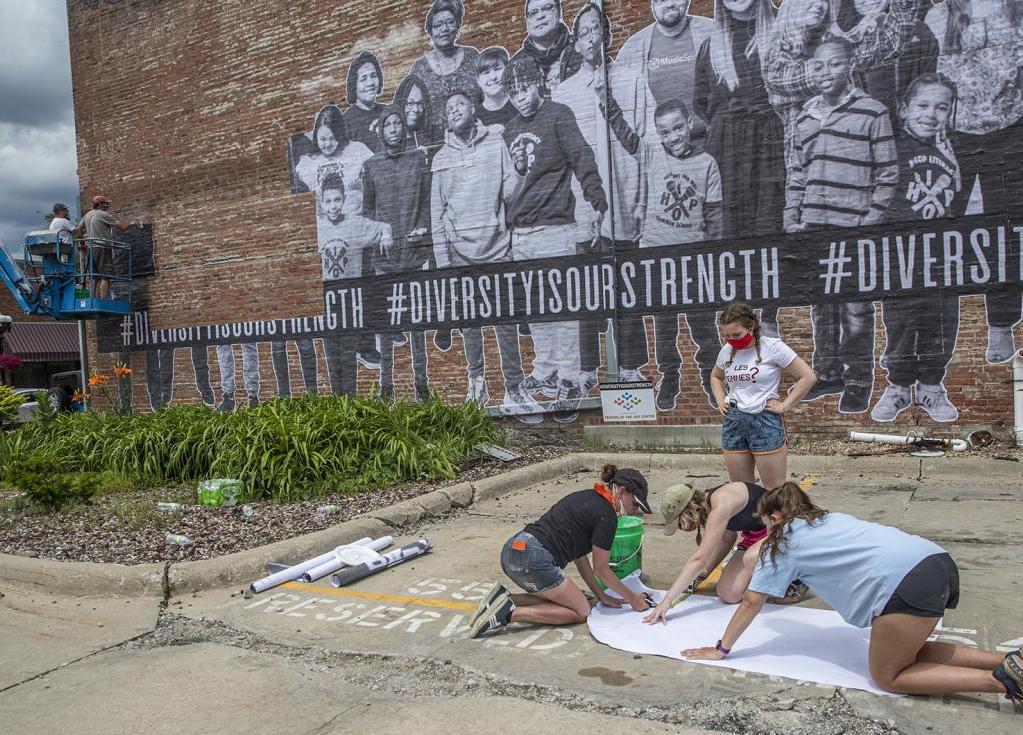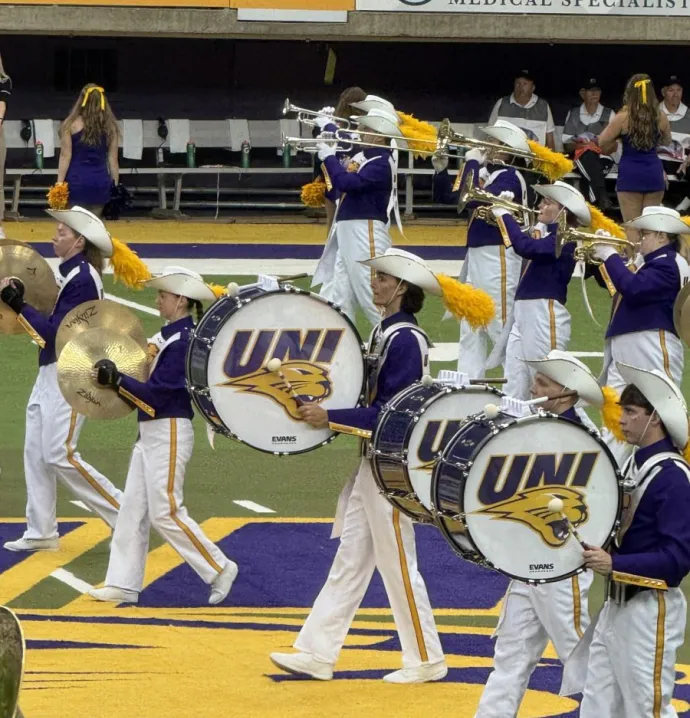UNI mural project highlights Cedar Valley's diversity
UNI mural project highlights Cedar Valley's diversity
During this time of national discussion of racial inequality, UNI is uplifting underrepresented voices. The Diversity Is Our Strength project aims to challenge racism and stereotypes about the Cedar Valley in a visible way with a downtown Waterloo mural and accompanying website.
The 80 by 20 foot mural and website project was conceived by UNI Associate Professor of Literacy and Education Shuaib Meacham. The idea for the project had “been kind of percolating beneath the surface since I first got [to UNI]” in 2013, after a faculty orientation left him wanting more representation of students of color, he said.
“It’s really ironic that when I had my first UNI class, I didn’t have any white students,” said Meacham. "Iowa is a diverse place, and it's something that we need to embrace.”
Thus, the Diversity Is Our Strength Project was born. Meacham collaborated with UNI professor Bettina Fabos’ Interactive Digital Studies (IDS) Practicum class, and her team of students led the project.
A number of community members were photographed and interviewed for the project, including students from Waterloo West High School, area public school students and local leaders — like Waterloo Mayor Quentin Hart, Beverly Smith, former regent and associate superintendent for Waterloo Schools, and Mickye Johnson, former director of UNI’s Classic Upward Bound program. In addition to sharing information about their background, each participant shared their thoughts on diversity.
“When multiple perspectives come together, it forces us to challenge our thinking and belief systems,” said Smith in her interview on the website. “When diversity is valued, problems can be better understood and more effectively resolved.”
“It’s about what is Iowa and who is Iowa and how we can all build together,” said Fabos. “I hope [the mural] says to all those kids that their voices matter and their stories matter and Iowans are more diverse than most people think.”
Recent IDS graduate Sami Enos led design of the graphic — a black-and-white collage of portraits with splashes of bold red — that would become the mural and acts as the centerpiece of the website.
“I wanted it to be edgy and a little bit attention grabbing so it would pull you in. I wanted it to have a serious undertone to it but also a playfulness,” Enos said of the design. “I feel like it can really bring the Cedar Valley together and open up a lot of people's eyes.”
On Tuesday, around 30 volunteers gathered in downtown Waterloo to apply the wheat paste mural to the side of a building on the corner of 4th Street and Lafayette in Waterloo. The group intended to put up the mural on Juneteenth but had to push their work back due to rain.
“To have that physical presence of broad diversity of people represented together … does feel very gratifying,” said Meacham. “The fact that we’re able to do that in Iowa, which has traditionally represented itself as white and rural, that’s an important breakthrough.”
That representation also resonates with UNI student Anthony Woodley, who served on the project’s social media team. Woodley grew up in the small town of Dike, where he was the only Black student in his classes. “Seeing just all these amazing people...it’s awesome and it inspires me,” he said, adding that he hopes the project promotes racial equity, including on UNI’s campus.
The project is just one way UNI is working to address inequity. UNI President Mark A. Nook also recently launched the Diversity, Equity, and Inclusion Advisory Committee, which will guide the university in addressing systemic barriers faced by students of color and other marginalized students. These initiatives reflect larger changes happening in our culture surrounding racial equity and inclusion.
“Diversity needs to be more than a buzzword,” said Waterloo Mayor and UNI alum Quentin Hart, the city’s first African-American mayor, in his interview for the Diversity Is Our Strength website. “It means that we have to be an inclusive community, which means broader home ownership, business ownership, and prosperity for all segments of the community.”
The project aims to be a part of more lasting change. The mural will remain up as long as the environment allows (the staying power of wheat paste murals depends on things like weather and sunlight). Meacham also plans to utilize the Diversity Is Our Strength website in his classes to help prepare future teachers to work with diverse students.
“The website represents a tangible document for me to use for student teachers … so they can see being a teacher is more than just teaching a curriculum,” he said. “ It’s really about connecting with these human beings who have talent and potential and helping them to realize it — not only for their own benefit but for the benefit of our community.”
That’s another focus of the project — highlighting the contributions Black and Brown people have made on the Cedar Valley community.
“There’s been so much impact by African Americans on the Cedar Valley. Those educators who have been determined to make sure that Black and Brown students also experience excellence in education and have excellent educational opportunities,” Meacham said. “[This project is] taking those practices of these legendary Black educators and connecting them to future educators.”









